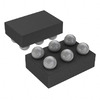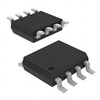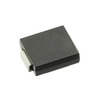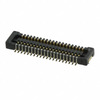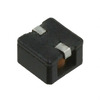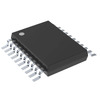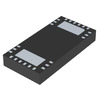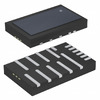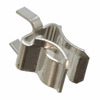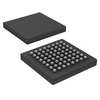LM386 Audio Amplifier IC: A Complete Guide to Usage and Applications
Due to its versatility and efficient performance, the LM386 audio amplifier IC has become a go-to choice for audio amplification. The LM386 is known for its compact design and robust capabilities, allowing it to enhance audio with minimal external components. With adjustable gain settings and low power consumption, this IC is ideal for portable devices, such as radios and small speakers. In this article, we'll explore the key features, practical applications, and design benefits of the LM386.Catalog

Understanding LM386
The LM386 is a versatile audio amplifier integrated circuit (IC) often in diverse packaging formats. It's mainly well-suited for low-voltage scenarios, making it a favorite and a wide range of commercial needs. The default internal gain of the LM386 stands at 20, yet it invites adaptability. By skillfully connecting a resistor and capacitor between pins 1 and 8, the gain can be extended to 200. This flexibility allows for its use across various innovative applications.
With its compact form and low power consumption, the LM386 complements portable and battery-powered devices beautifully. Its ability to enhance battery efficiency resonates deeply with your experiences, especially in devices like battery-powered radio systems. The LM386 shines in numerous applications like small radio projects and DIY audio amplifiers. Its versatility is celebrated, with the ease of implementation unlocking countless creative avenues. You can appreciate the straightforward integration into existing circuits, which enriches its practical appeal.
LM386 Pin Configuration
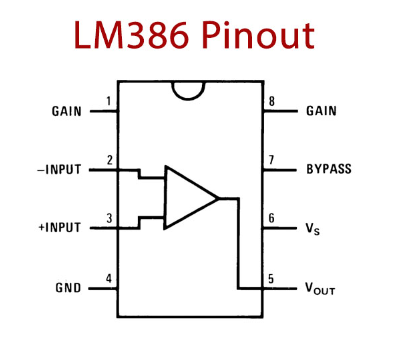
|
Pin Number |
Pin Name |
Description |
|
1, 8 |
GAIN |
Used to set the gain of the IC by connecting to a
Capacitor |
|
2 |
Inverting Input (IN-) |
The Inverting Pin of the amplifier is normally grounded |
|
3 |
Non-Inverting Input (IN+) |
The Non-Inverting pin is provided with the audio signal |
|
4 |
Ground |
The ground pin is connected to the ground of the system |
|
5 |
Vout |
Provides amplified audio output, connected to the speaker |
|
6 |
Vss/Vcc |
Connected to power |
|
7 |
Bypass |
A bypass pin is used for connecting a decoupling
capacitor |
CAD Models of LM386
Symbol
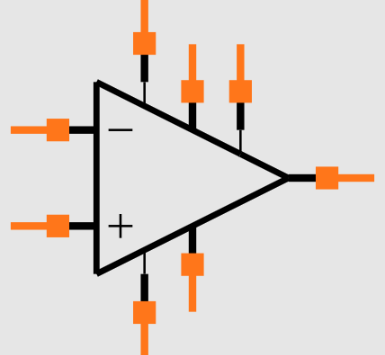
Footprint
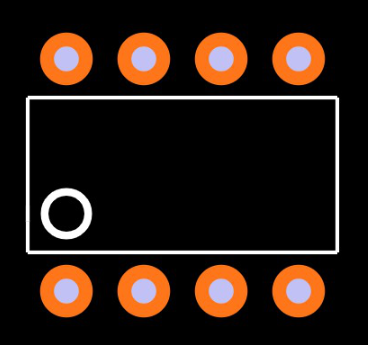
3D Models
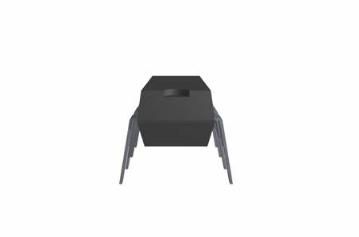
Applications of the LM386
The LM386 audio amplifier IC is noted for its flexibility, making it a favored choice across various domains. Its applications span diverse areas such as sensors, radio audio systems, computers, toys, and signal processing circuits. This wide array of uses emphasizes its versatility in numerous settings.
Sensors
In sensors, the LM386 plays a major role in amplifying faint signals for more accurate data analysis. Its enhancement of system precision and responsiveness lends substantial importance in both industrial and consumer technologies, especially where high accuracy is deeply valued.
Radio Audio Systems
Renowned for its efficiency and low power requirements, the LM386 is frequently utilized in radio audio systems. It excels in providing crisp audio output with minimal distortion. Innovative circuit designs often explore its capacity to heighten sound clarity and reduce noise, making it basic to radio technology.
Computer Audio Components
Within computer audio systems, the LM386 amplifies sound signals, contributing to an enriched auditory experience. Its compact nature facilitates easy integration into hardware, supporting the growth and refinement of multimedia functionalities within computers.
Toys
The LM386's adaptability extends to the world of toys, and driving sound modules that enrich interactive audio features. Its energy-efficient design is particularly advantageous for battery-operated toys, ensuring longer periods of enjoyment.
Signal and Preamplification Circuits
When it comes to signal and preamplification circuits, the LM386 shines by boosting low-voltage audio signals. Its straightforward integration and adaptability assist in the early phases of signal processing, setting the stage for further sound enhancement in sophisticated audio systems.
Specifications of LM386
Here is the table content for the Texas Instruments LM386N technical specifications, attributes, and parameters along with parts with similar specifications.
|
Type |
Specification |
|
Mount |
Through Hole |
|
Package / Case |
PDIP |
|
Number of Pins |
8 |
|
Power Dissipation (Max) |
1.25W |
|
JESD-609 Code |
e0 |
|
Pbfree Code |
No |
|
Moisture Sensitivity Level (MSL) |
1 (Unlimited) |
|
ECCN Code |
EAR99 |
|
Terminal Finish |
Tin/Lead (Sn/Pb) |
|
Max Operating Temperature |
70°C |
|
Min Operating Temperature |
0°C |
|
Peak Reflow Temperature (°C) |
Not Specified |
|
Time @ Peak Reflow Temperature - Max (s) |
Not Specified |
|
Number of Channels |
1 |
|
Max Supply Voltage |
12V |
|
Min Supply Voltage |
4V |
|
Operating Supply Current |
4mA |
|
Max Output Power |
325mW |
|
Power - Output |
1W |
|
Consumer IC Type |
Audio Amplifier |
|
RoHS Status |
RoHS Compliant |
|
Lead Free |
Contains Lead |
Features
|
Feature |
Description |
|
Low Noise and Low Distortion Circuitry |
Ensures clear and reliable audio output. |
|
Small Size |
Available in an 8-pin DIP package for compact designs. |
|
Quiescent Power |
Consumes only 24mW on a 6V supply in quiescent state. |
|
Current Consumption (Standby Mode) |
Consumes only 4mA in standby mode, improving efficiency. |
|
Wide Supply Voltage Range |
Operates with a supply voltage from 4V to 18V. |
|
Minimal External Circuitry |
Requires only a few external components for operation. |
|
Adjustable Voltage Gain |
Gain can be set between 20 to 200 with external parts. |
|
Available Packages |
Also manufactured in VSSOP and SOIC packages for flexible
use. |
|
Maximum Output (LM386N-4) |
Can deliver up to 1000mW output power on a 16V supply. |
LM386 Substitutes
Alternative Options to the LM386
LM386 Circuit Design

Operations of LM386
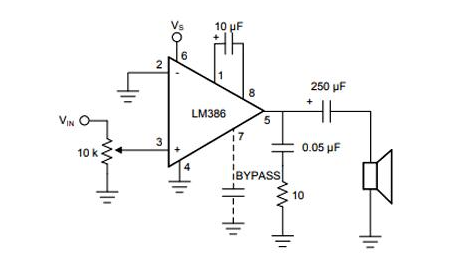
The LM386 is a low-voltage audio power amplifier integrated circuit, designed to streamline audio amplification with minimal external components. This makes it well-suited for battery-operated devices and compact electronic projects.
Power Supply and Initial Setup
For powering the LM386, link a voltage source, typically between 5-9V, to pin 6, and connect ground to pin 4. This ultimate configuration ensures appropriate power delivery, laying the groundwork for audio processing. Efficient power usage is beneficial in portable applications, contributing to extended device lifespan.
Signal Input and Volume Adjustment
The audio input is applied to pin 3. To control the volume, a potentiometer is connected in series with this input. This setup offers precise regulation of audible output levels. Practically, fine-tuning volume sensitivity can significantly improve your experience across various environments.
Gain Configuration and Enhancement
Gain, influencing the level of amplification, is adjusted using pins 1 and 8. By inserting a capacitor between them, the gain ranges from a minimum of 20 to a potential maximum of 200. This adaptability allows the LM386 to cater to diverse audio needs. Experimenting with different configurations can achieve superior sound for particular arrangements.
Understanding TI's Role in LM386 Development
Texas Instruments Inc., based in Dallas, TX, stands out for its extensive range of semiconductor solutions. Esteemed in the field of analog chips and embedded processors, TI's continuous innovation fuels progress across numerous electronic applications. Their dedication to research and development shapes the creation of efficient and reliable innovations that evolve with industry trends.
TI's profound capabilities span diverse semiconductor technologies with a notable emphasis on crafting power-efficient analog systems. These components significantly enhance audio experiences in devices, creating richer interactions. Experts in the industry value TI's skill in marrying advanced technology with practical use, consistently evident in their versatile and robust product range.
LM386 Packaging Variants
PDIP (P)
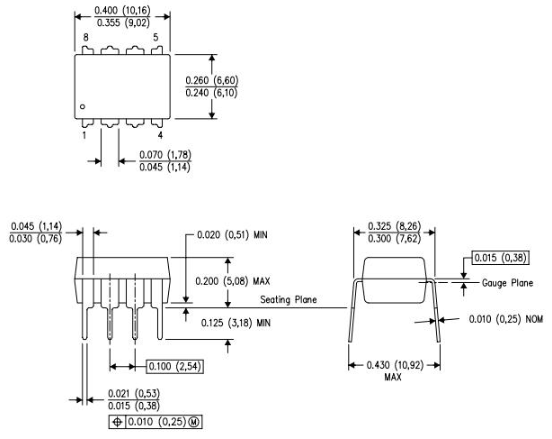
SOIC (D)
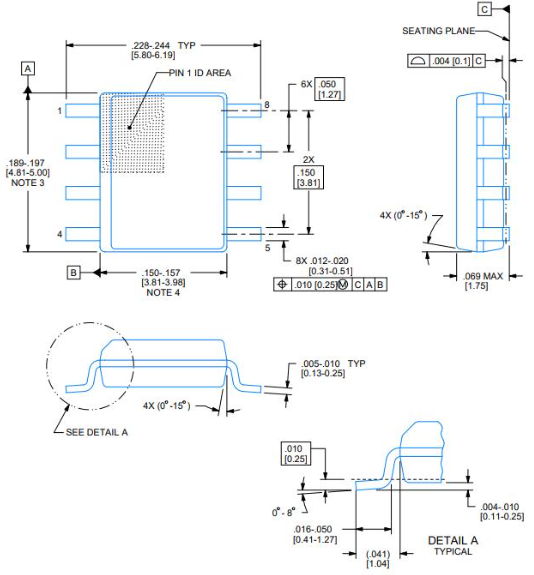
VSSOP (DGK)
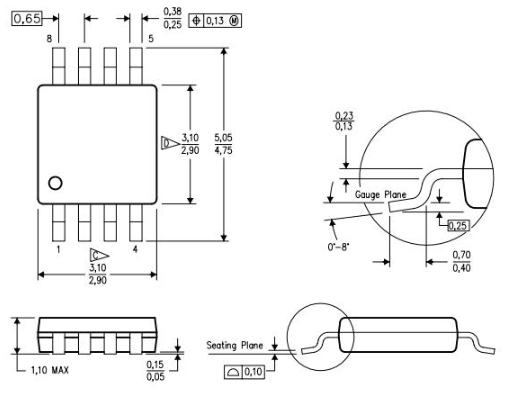
Advanced Recommendations for Long-Term LM386 Use
Voltage Regulation and Stability
Ensuring the consistent operation of the LM386 audio amplifier involves managing the power supply voltage to stay under 18V, which helps prevent over-voltage damage. Over-voltage can adversely affect performance and may lead to the amplifier's failure. For you encountering frequent supply fluctuations, integrating a dependable voltage regulator can help maintain power stability.
Precision Soldering for Reliability
Careful soldering extends the life of the LM386. Clean and solid solder joints prevent connectivity issues often caused by cold solder joints. Utilizing flux can improve the soldering process's quality. While such precision may appear meticulous, it greatly enhances the device's durability over time.
Temperature Management and Performance
Operating the LM386 within its recommended temperature range supports optimal efficiency. Excessive heat may shorten component longevity and impair performance. Mitigating overheating risks can be achieved by using heat sinks and ensuring adequate ventilation in circuit design. This approach promotes durability and reliable operation.
Frequently Asked Questions [FAQ]
1. How does the LM386 function?
The LM386 works by boosting low-power audio signals within a compact 8-pin DIP package. It typically offers a gain of 20, adjustable to 200 by adding external components. This flexibility suits it for diverse audio applications. You can carefully select resistors and capacitors, fine-tuning the gain for optimal clarity and output, reflecting a dance of precision and creativity in technical adjustments.
2. What applications use the LM386 IC?
As a favored audio power amplifier, the LM386 is perfect for small, battery-powered devices like radios and guitar amplifiers. Its efficiency in low-voltage environments exemplifies its appeal in portable technology, bridging the gap between energy conservation and sound quality, revealing the delicate balance in contemporary consumer electronics.
3. Which IC is frequently chosen for audio amplifiers?
The LM386 stands out for its low power use and compatibility with battery-based systems, making it a valuable component in various electronics. It embodies a harmonious blend of performance and efficiency, embodying principles that resonate across countless engineering endeavors involving portable audio.
4. Is the LM386 considered an operational amplifier?
Yes, the LM386 is categorized as an operational amplifier, with a focus on audio applications. It emphasizes efficient power use while amplifying sound. While it shares traits with general-purpose op-amps, its design is finely tuned to enhance audio, indicating a purposeful and targeted approach in electronic crafting.
5. What kind of amplifier is the TDA7052?
The TDA7052 serves as a mono-output amplifier crafted for battery-powered audio devices. Its design supports efficient output with minimal power use, aligning with the needs of today’s portable gadgets. Its integration in compact circuits emphasizes strategic design principles, optimizing both space and performance, unveiling the art of engineering efficiency.
About us
ALLELCO LIMITED
Read more
Quick inquiry
Please send an inquiry, we will respond immediately.
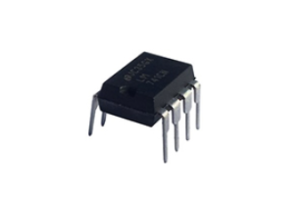
Exploring the LM741CN Operational Amplifier: Pinout, Specifications, and Use Cases
on October 25th
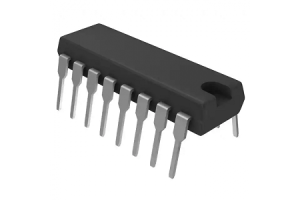
LM3524: Pinout, Specifications, and Datasheet
on October 24th
Popular Posts
-

What is GND in the circuit?
on January 1th 2921
-

RJ-45 Connector Guide: RJ-45 Connector Color Codes, Wiring Schemes, R-J45 Applications, RJ-45 Datasheets
on January 1th 2484
-

Fiber Connector Types: SC Vs LC And LC Vs MTP
on January 1th 2075
-

Understanding Power Supply Voltages in Electronics VCC, VDD, VEE, VSS, and GND
on November 8th 1863
-

Comparison Between DB9 and RS232
on January 1th 1756
-

What Is An LR44 Battery?
Electricity, that ubiquitous force, quietly permeates every aspect of our daily lives, from trivial gadgets to life-threatening medical equipment, it plays a silent role. However, truly grasping this energy, especially how to store and efficiently output it, is no easy task. It is against this background that this article will focus on a type of coin cell battery that may seem insignificant on the...on January 1th 1706
-

Understanding the Fundamentals:Inductance Resistance, andCapacitance
In the intricate dance of electrical engineering, a trio of fundamental elements takes center stage: inductance, resistance, and capacitance. Each bears unique traits that dictate the dynamic rhythms of electronic circuits. Here, we embark on a journey to decipher the complexities of these components, to uncover their distinct roles and practical uses within the vast electrical orchestra. Inductan...on January 1th 1649
-

CR2430 Battery Comprehensive Guide: Specifications, Applications and Comparison to CR2032 Batteries
What is CR2430 battery ?Benefits of CR2430 BatteriesNormCR2430 Battery ApplicationsCR2430 EquivalentCR2430 VS CR2032Battery CR2430 SizeWhat to look for when buying the CR2430 and equivalentsData Sheet PDFFrequently Asked Questions Batteries are the heart of small electronic devices. Among the many types available, coin cells play a crucial role, commonly found in calculators, remote controls, and ...on January 1th 1536
-

What Is RF and Why Do We Use It?
Radio Frequency (RF) technology is a key part of modern wireless communication, enabling data transmission over long distances without physical connections. This article delves into the basics of RF, explaining how electromagnetic radiation (EMR) makes RF communication possible. We will explore the principles of EMR, the creation and control of RF signals, and their wide-ranging uses. The article ...on January 1th 1525
-

CR2450 vs CR2032: Can The Battery Be Used Instead?
Lithium manganese batteries do have some similarities with other lithium batteries. High energy density and long service life are the characteristics they have in common. This kind of battery has won the trust and favor of many consumers because of its unique safety. Expensive tech gadgets? Small appliances in our homes? Look around and you'll see them everywhere. Among these many lithium-manganes...on January 1th 1497

